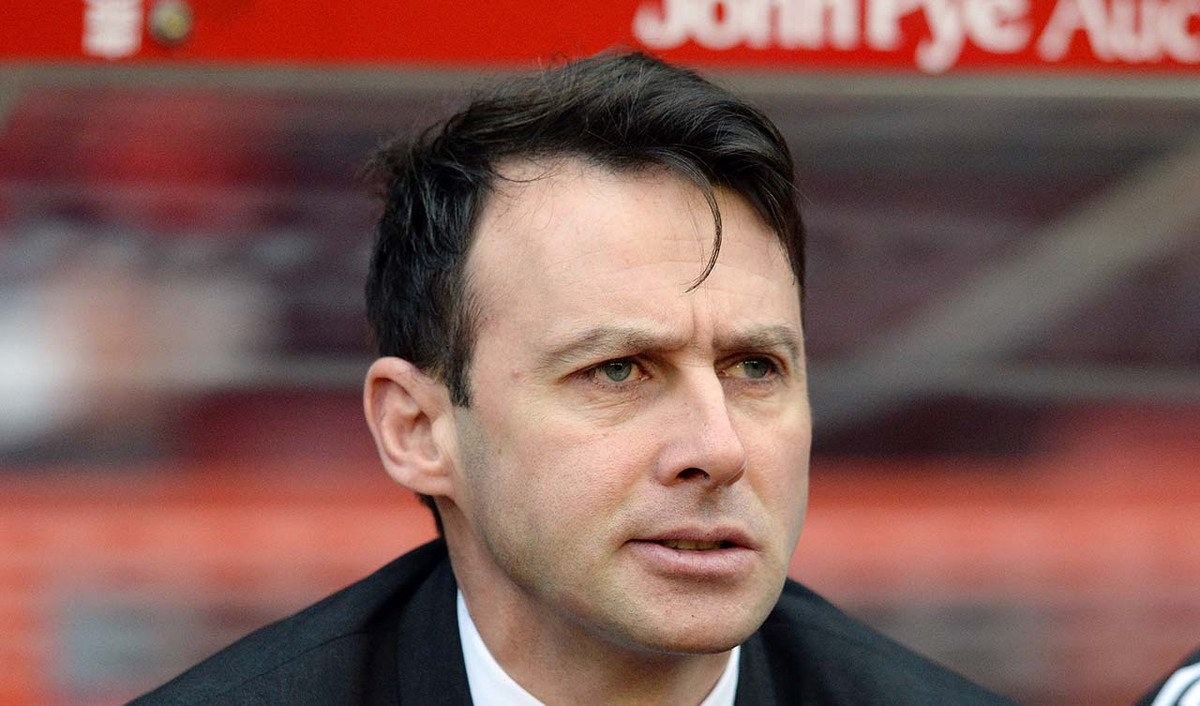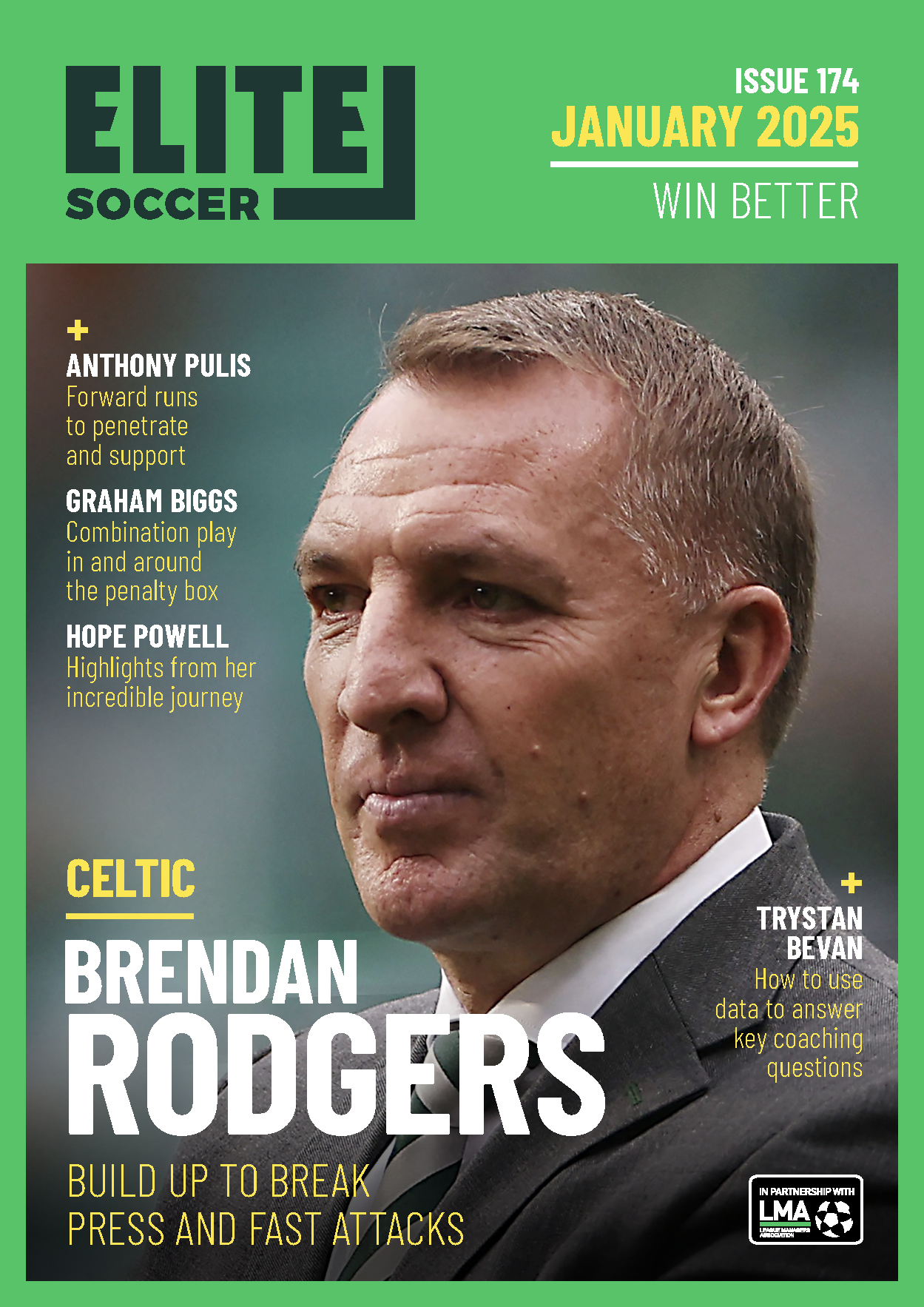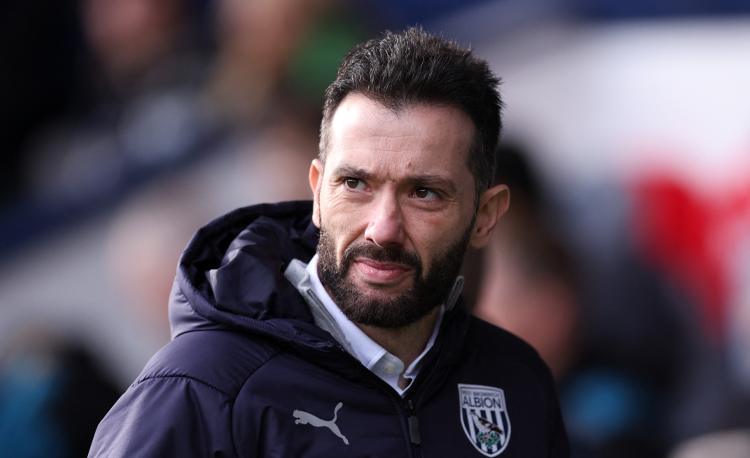You are viewing 1 of your 1 free articles
Attacking philosophy
This session is designed to replicate our shape in a game, and to give players an idea of our passing and player movement in different areas of the pitch.
| Area | Up to two thirds of a pitch |
| Equipment | Balls, cones, discs, mini-goals |
| No. of Players | Up to 8v6 plus keepers |
| Session Time | 20mins per practice |
This session is designed to replicate our shape in a game, and to give players an idea of our passing and player movement in different areas of the pitch.
Rehearsing this sort of movement is vital if players are to gain an understanding of team mechanics, since this mode of attacking play will be replicated many times in the course of a game.
The practice reinforces the notion that we attack and defend as one – so full-backs are as pivotal to attacking moves as any other player on the pitch.
What do I get the players to do?
Passing drill
Set up as shown (1). Players must pass and follow the ball to the next cone. As soon as the ball has been worked half way round, a second is introduced. When a ball gets to the top striker he can finish into any goal.
All passes are of at least 10 yards, with longer distances encouraged if your players can continue to pass accurately and with good tempo.
1
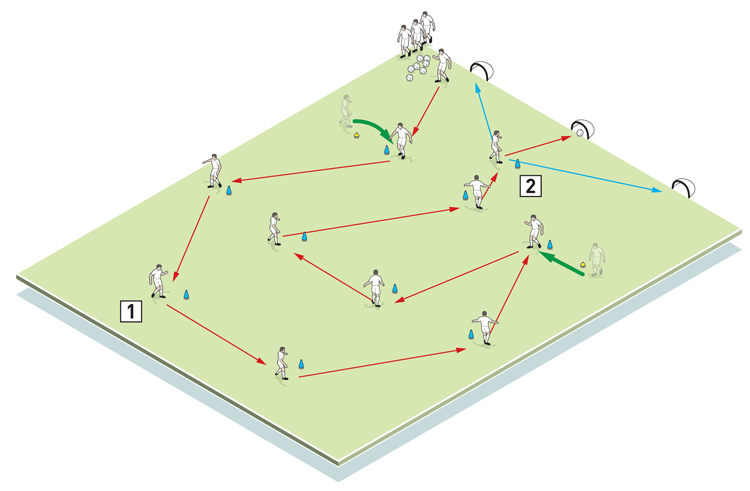
2. When the pass arrives with the striker, he has a choice of which goal to aim at
Extended pitch attack
We now set up on a half-pitch plus 20 yards (2). The initial pass comes from the corner of the penalty area down to the central defender, who brings the ball down and switches to his fellow defender.
The full-back and wide midfielder combine, as shown, with a pass being slid down the line for the latter to then spin out and receive. A subsequent cross is attacked by players running at pace into the box – three attackers go early with a midfielder arriving later to the edge of the box. The central defender drops in from just outside the box to defend.
2
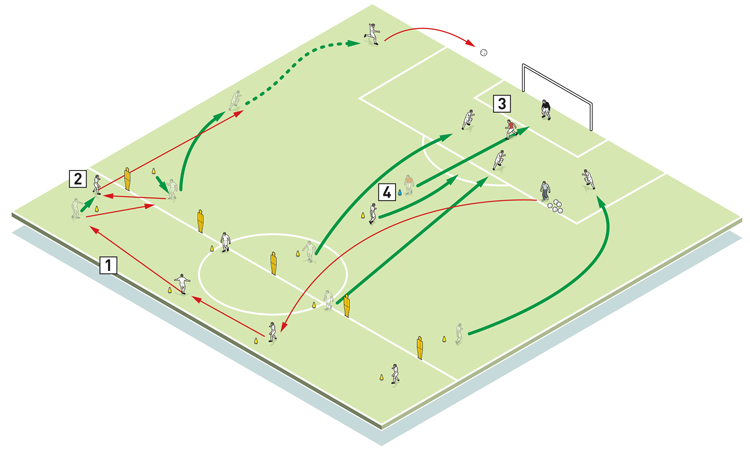
2. The left-back and midfielder link up with short one-touch passing
3. Attackers and the opposing centre-back head into the box
4. The midfielder holds his run on the edge of the box, ready to react to any knock-downs
Attacking from deep
In the final practice, we set up as shown (3 main), with attacking players starting besides mannequins. There are six red opposition players – two centre-backs to defend the box from attacks and four midfielders (as a diamond) who try to stop the ball getting past them. As soon as it goes past, they are out of the practice.
To start, the keeper collects a cross, then throws the ball to the right full-back, who receives, staying aware of opposition players moving in around him to press. So the wide man will receive, either out wide or by driving inside. He takes two touches and plays on.
The move continues to build - other players must note the development of play and adjust their positions accordingly... for instance, if the winger is driving inside, the left-back should realise the ball is being switched and might move across to overlap.
And just as in the Extended Pitch Attack, we should have attackers, both wingers and a midfielder trying to get into the box for the cross. Opposition centre-backs defend the cross.
After the attack has finished, we’ll play two balls to the retreating strikers to have a shot (3 inset). We then reset positions and go again.
3
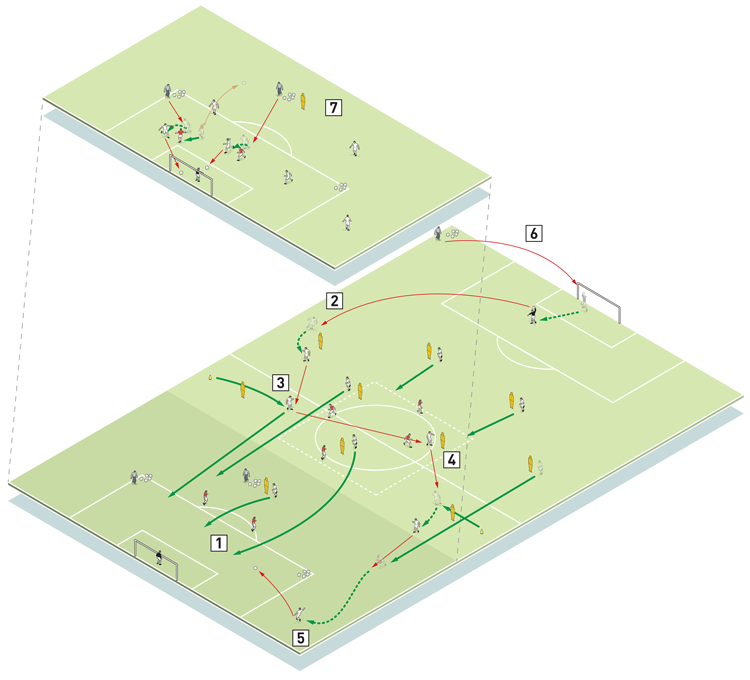
2. The keeper feeds the ball out to the right full-back
3. On this occasion, the wide midfielder drives inside
4. The left midfield player moves inside to receive the pass and switches play to the left wide man
5. The left full-back overlaps and sends over a cross
6. The cross is attacked
7. At the end of the first attack, two balls are served into attackers for shots on goal
What are the key things to look out for technically/tactically?
Timing and the type of movement are crucial – for instance, central midfielders playing to the opposite wide man rather than just the nearest player.
We also want to see players ‘locking in’ behind the ball, ensuring they are covering any threat left by the opposition leaving players up.
Related Files
Editor's Picks
Using the goalkeeper in build-up play
Pressing principles
Intensive boxes drill with goals
Penetrating the final third
Creating and finishing
My philosophy
Pressing initiation
Compact team movement
Defensive organisation
Coaches' Testimonials

Alan Pardew

Arsène Wenger

Brendan Rodgers

Carlos Carvalhal

José Mourinho

Jürgen Klopp

Pep Guardiola

Roy Hodgson

Sir Alex Ferguson

Steven Gerrard
Coaches' Testimonials

Gerald Kearney, Downtown Las Vegas Soccer Club

Paul Butler, Florida, USA

Rick Shields, Springboro, USA

Tony Green, Pierrefonds Titans, Quebec, Canada
Join the world's leading coaches and managers and discover for yourself one of the best kept secrets in coaching. No other training tool on the planet is written or read by the calibre of names you’ll find in Elite Soccer.
In a recent survey 92% of subscribers said Elite Soccer makes them more confident, 89% said it makes them a more effective coach and 91% said it makes them more inspired.
Get Monthly Inspiration
All the latest techniques and approaches
Since 2010 Elite Soccer has given subscribers exclusive insight into the training ground practices of the world’s best coaches. Published in partnership with the League Managers Association we have unparalleled access to the leading lights in the English leagues, as well as a host of international managers.
Elite Soccer exclusively features sessions written by the coaches themselves. There are no observed sessions and no sessions “in the style of”, just first-hand advice delivered direct to you from the coach.
